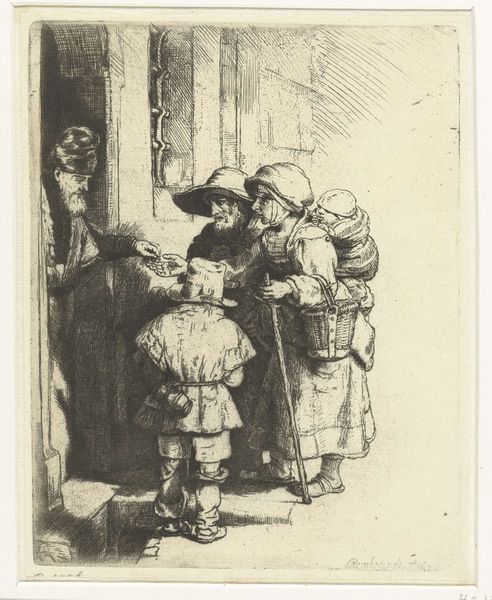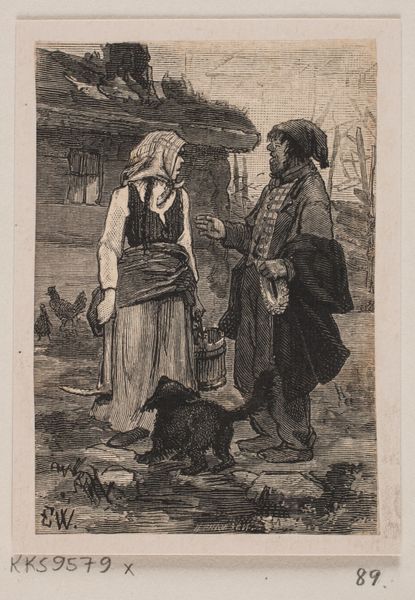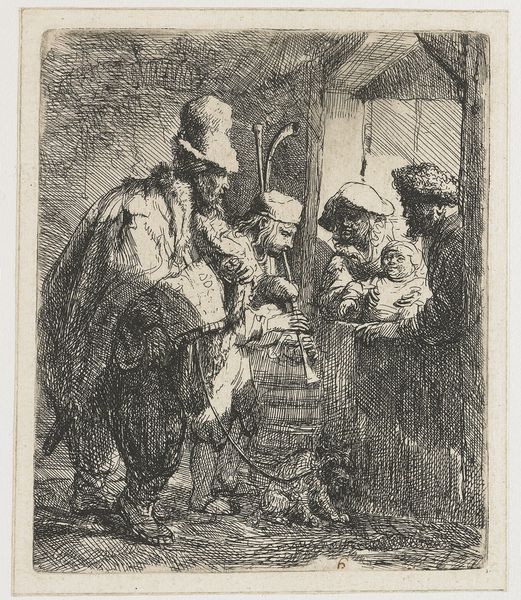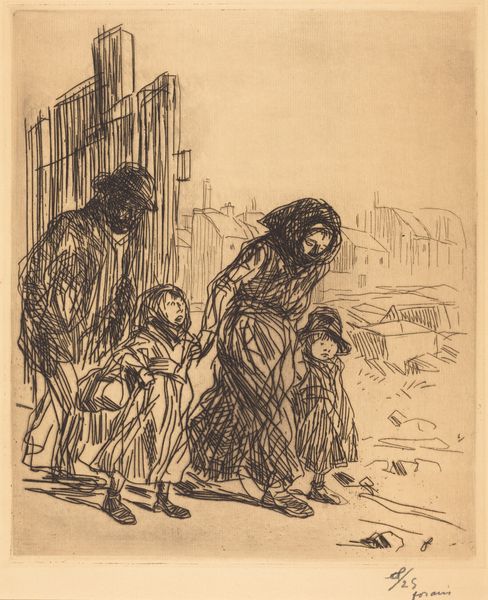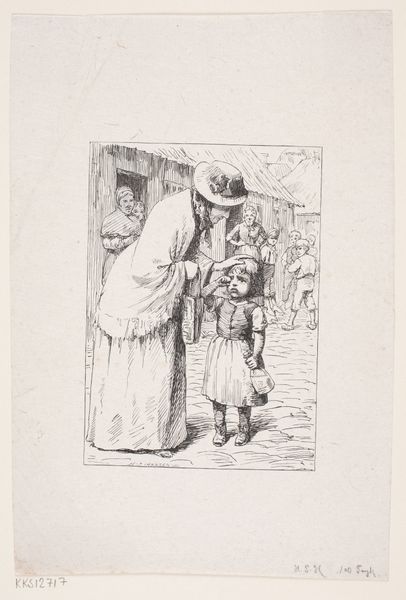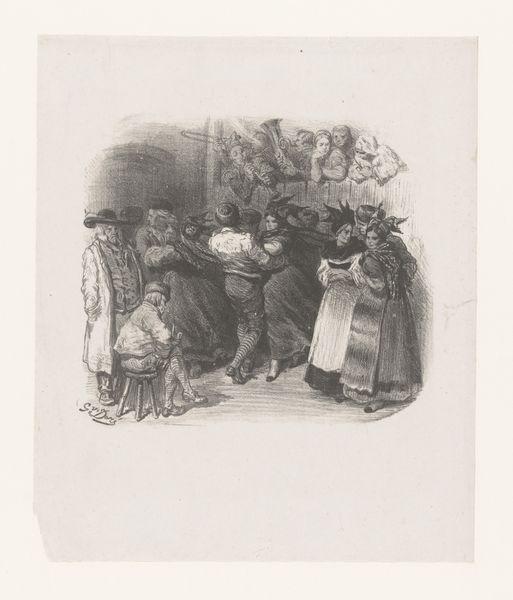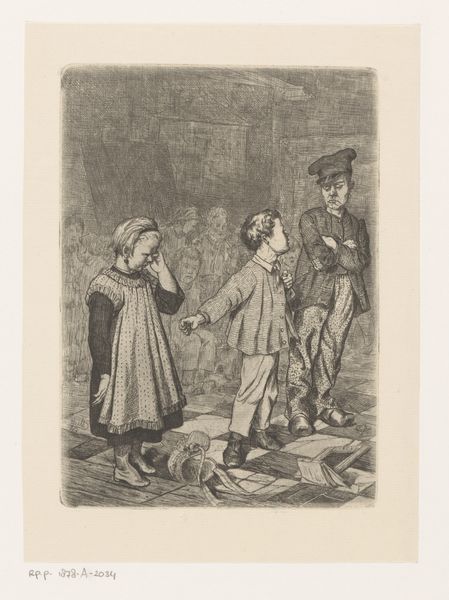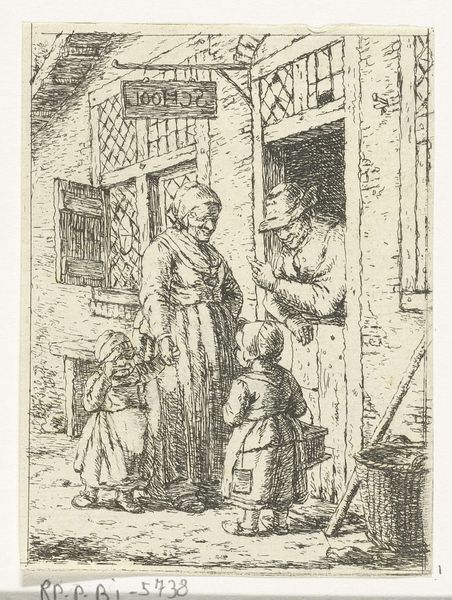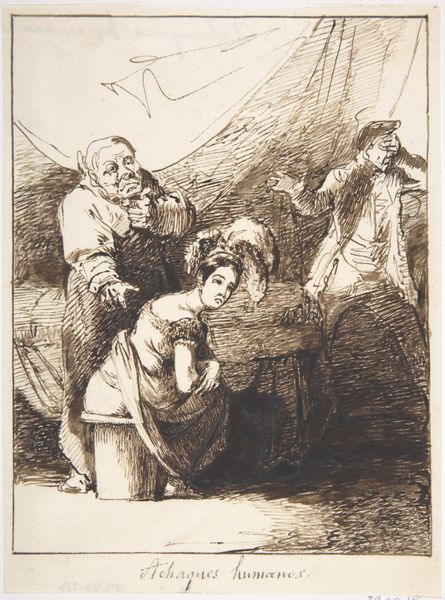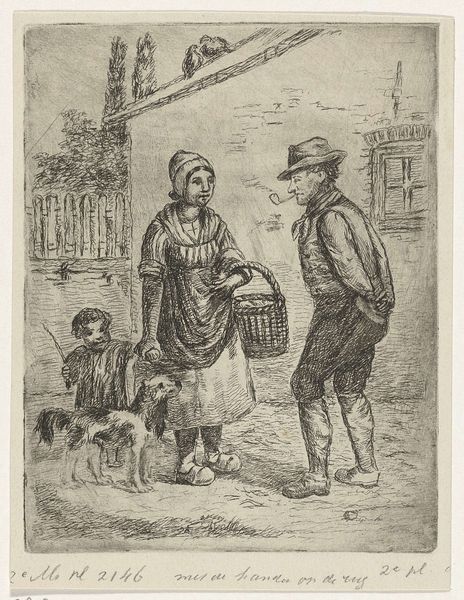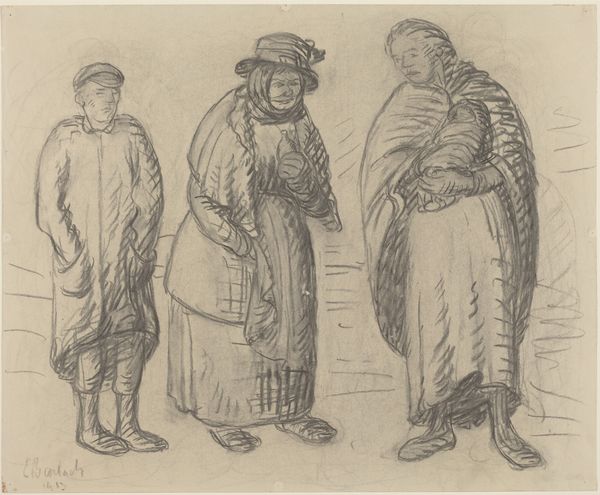
Dimensions: 219 mm (height) x 201 mm (width) (bladmaal)
Editor: Here we have "Fra Reykjaviks skibsbro" by Balzer Dahl, made sometime between 1825 and 1893. It's a drawing and print, primarily using etching and ink. It feels very grounded and stark to me. What catches your eye in this piece? Curator: Immediately, I’m drawn to the intricate line work. The density and variation of the etching create depth and texture, particularly in the depiction of clothing and the reflections on what seems to be a wet street. The composition relies heavily on contrasting light and shadow. Editor: So it’s the contrasts that really define the visual interest for you? Curator: Precisely. Observe how the artist uses the white of the paper to create highlights, directing our gaze through the scene. The strategic placement of darker areas establishes a clear focal point on the standing figure in the center. Consider how the textures differ between the woman's garments and the rough, weathered planks of the bridge. Dahl meticulously crafted a scene where formal elements support a clear representational agenda, regardless of its true realism. Do you see other formal devices? Editor: I guess I was focusing on the kind of… seriousness of the subject more. But now that you mention it, the way the lines almost converge on the central figure really does guide your eye. It makes her feel almost… monumental. Curator: Indeed. The structural relationships inherent in Dahl's deployment of line and form, along with your insight on the subject's bearing, give cause to study Realism within Romanticism. Editor: That’s a perspective I hadn’t considered, but now I have new appreciation for Dahl’s technical skill in constructing a visual narrative. Curator: And hopefully a keener eye for appreciating the underlying structure that lends art both meaning and strength.
Comments
No comments
Be the first to comment and join the conversation on the ultimate creative platform.
